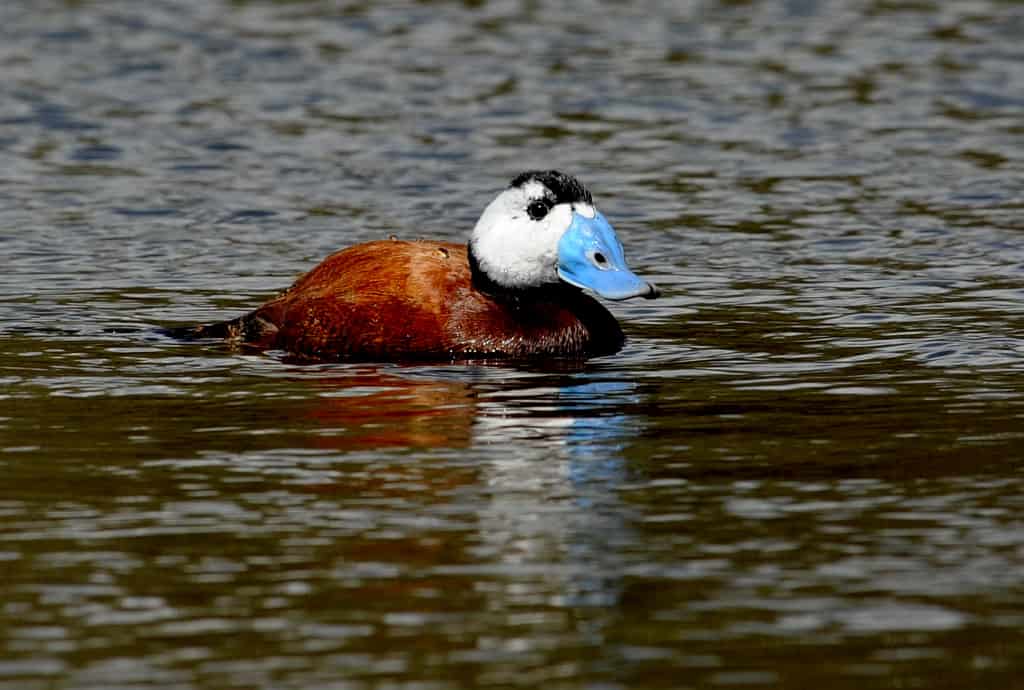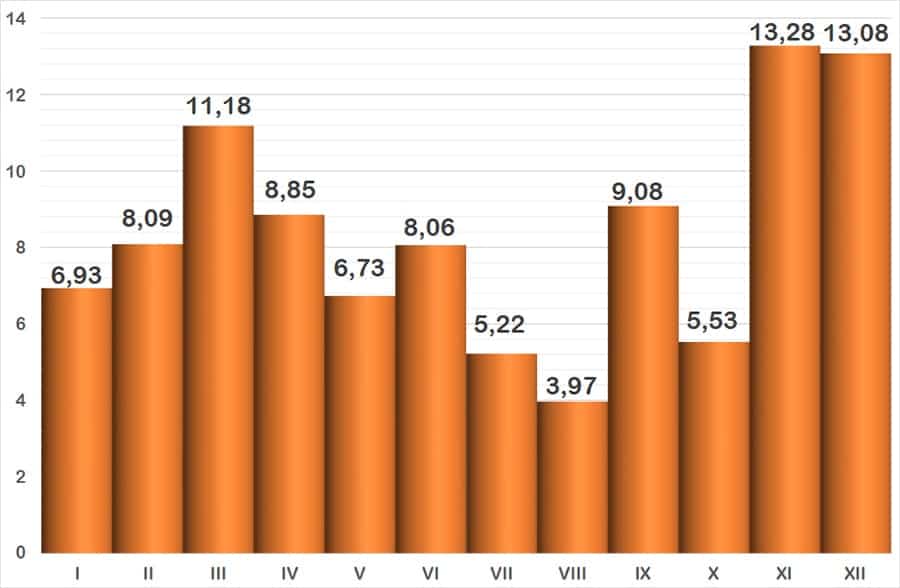It is a characteristic small diving duck. Its large head, bulbous bill and long tail make its silhouette easily identifiable. The male has a white head with black striped patterns and hood, and in the mating season it sports a striking bluish beak. The female lacks this beak colour and the tones of her head and facial pattern combine brown colours.

Species 1
White-headed Duck
Scientific name
Family 2
Taxonomic Affinity Group 3
Phenology 4
It is a resident bird. It is the fourth species of duck in abundance, practically equal to the third, proving the importance of this wetland for this duck which is considered “in danger of extinction”. In the province of Almería, the Salinas Viejas was the second wetland where the first ducklings were observed and has even become the top breeding location at times.
The end of August is the least likely time to spot the species, which has an unusual wintering behaviour for the phenological pattern in the rest of the country. The prenuptial migratory passage is also a good time to watch it.
.
The graph represents the probability of seeing a species during the year, grouped into months. The vertical axis indicates the percentage value. Each of the bars expresses its value. The horizontal axis represents the months: I = January, II = February, III = March, IV = April, V = May, VI = June, VII = July, VIII = August, IX = September, X = October, XI = November and XII = December.
Observation recommendations
In the ‘Gravera’, some idividuals tend to be noticeably confident, and it is also easily observed in the ‘Salinas Viejas’ from ‘Cerrillos’ Avenue.
Observation areas where we can find it
Notes
[1] The names used are from the list of birds of Spain, drawn up by SEO/BirdLife and updated to 2019 (https://seo.org/listaavesdeespana/). The reference is: Rouco, M., Copete, J. L., De Juana, E., Gil-Velasco, M., Lorenzo, J. A., Martín, M., Milá, B., Molina, B. & Santos, D. M. 2019. Checklist of the birds of Spain. 2019 edition. SEO/BirdLife. Madrid.
[2] The taxonomic family to which it belongs is indicated.
[3] Traditionally, waterbirds have been grouped according to their taxonomy or “taxonomic affinity”, i.e., when some birds coincide in certain features that allow them to be classified scientifically, but without leaving the rigour of science, they are put together in these groups so that they can be easily recognised. These groups are the following: Greves (belonging to the Podicipedae family), Herons and Similar (includes the families: Ardeidae -Herons- Ciconiidae -Storks- and Threskiornithidae -Ibises and spoonbills-), Ducks (the whole Anatidae family), Coots and Similar (the family Rallidae corresponding to Rails, Gallinules and Coots), Cranes (also with only one family, the Gruidae), Waders , a heterogeneous group, the most diverse of this classification, includes the families Burhinidae (Stone-curlews), Haematopodidae (Oystercather), Recurvirostridade (Avocets and Stilts), Glareolidae (Pranticole), Charadriidadea (Plovers), Scolapacidae and finally Gulls and Similar (the recently unified family Laridae, i.e. Gulls and Terns).
[4] Phenology studies the relationship between the cycles of living beings and meteorological factors, and in our latitude these factors manifest themselves as variations throughout the year, thus relating the seasons to the birds’ cycles (breeding, migratory journeys, etc.) The graph shows the probability of seeing a bird depending on the month. It uses data from 48 bird censuses carried out between October 2016 and September 2018. The method used is that of a census route with sampling stations, with a total count on the sheet of water.
